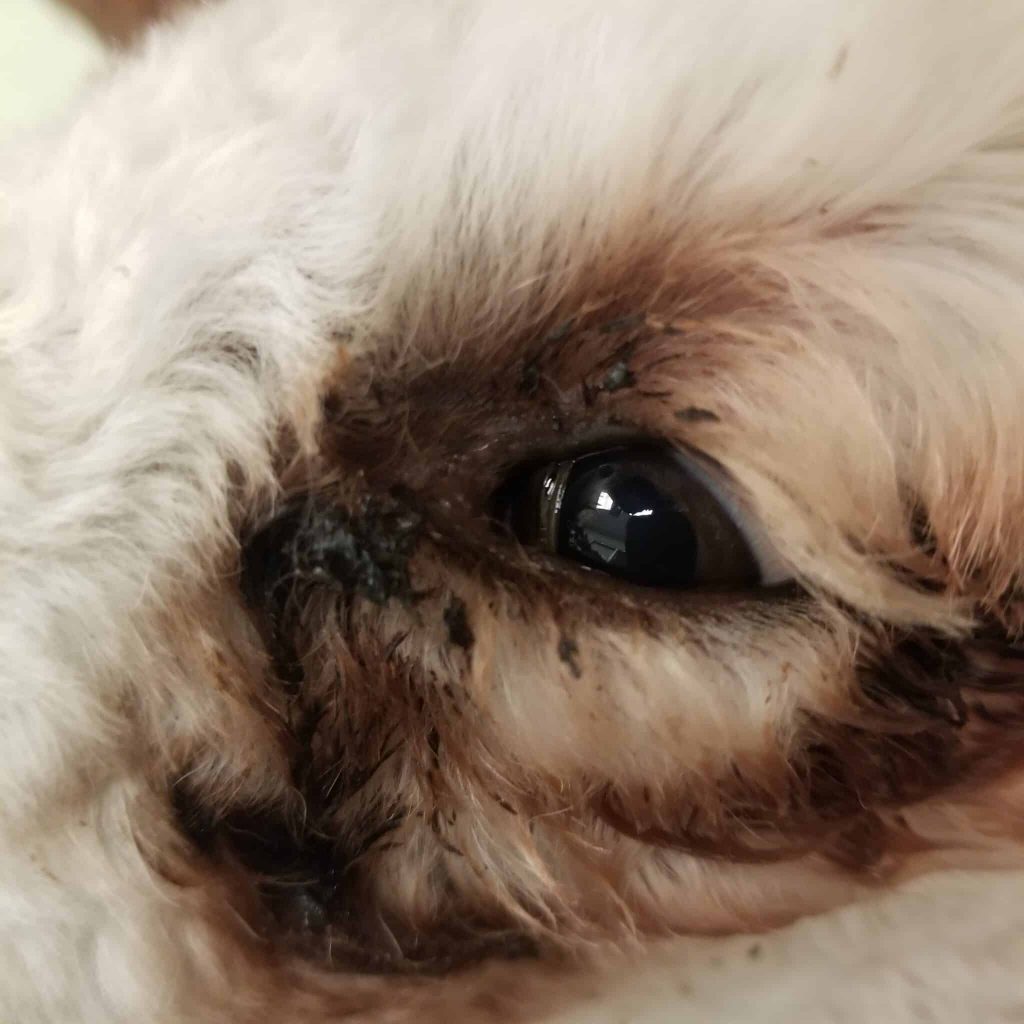Skin and coat disorders are common reasons dogs make a trip to the veterinarian’s office. This makes sense since skin is by far your pet’s most visible organ, and skin disease is one of the most common diseases in dogs, according to pet insurance data. Fur color changes may also indicate an underlying issue with your canine companion. I’ll discuss some common reasons for fur color changes in today’s blogpost.
Why does white fur turn red?
Reddish discolored fur can be found on many white, cream or apricot coated dogs, especially around the eyes or on the feet. Multiple factors contribute to this coat color change. Tears and saliva contain porphyrins, a naturally occurring red-brown pigment. Areas where tears and saliva accumulate on the fur, such as the face or the commonly licked feet, porphyrins turn the fur red. This chronic moisture also promotes the growth of bacteria and yeast on the fur, which can further discolor it. Brown-stained paws are often a clue in the diagnosis of allergic skin disease in dogs.
Why does black hair turn red?
About a week ago, I saw one of my cancer patients who had completed treatment months ago. Yet this dog’s chocolate brown coat now has new patches of orange-brown fur not present during chemotherapy. What happened?
This handsome fella’s owner told me that he had a diet change after completing chemotherapy. Occasionally a particular brand of food isn’t quite right for the metabolism of a particular dog, and their coat suffers. Specifically, amino acids in your dog’s diet are responsible for producing the pigments that determine coat color. The darker the coat, the more animo acids required. My theory is the new diet is short of his amino acid requirement, so we have switched him back to the old diet as a test.
Why do spotted dogs turn bronze?
In some Dalmatians, their spotted coat turns brown in a phenomenon called Dalmatian bronzing syndrome. This is due to an inherited metabolic abnormality that affects their digestion of the DNA building block purine and causes the build up of uric acid in their body. The accumulated uric acid in their skin turns it a bronze tint. Uric acid also forms crystals in the urine and, in many Dalmatians, results in recurrent bladder stones. Feeding affected Dalmatians a special diet decreases uric acid accumulation and helps prevent both bladder stones and skin changes.
Why does cancer treatment change coat color?
Unlike humans, most dogs don’t lose a significant amount of hair from cancer treatment; however, changes in coat color are common. This is due to cancer treatments’ targeting of rapidly dividing cells, including those that produce hair. Radiation therapy damages hair follicles at the site of the treatment. At first, this causes hair loss, then when the hair returns, the damage often results in a patch of abnormally colored hair.
Melanoma is a tumor of pigment producing cells. Veterinary oncologists have an anti-cancer vaccine that protects against this tumor by producing an immune response against the pigment producing cells. One minor, but highly visible, side effect of the vaccine is a loss of pigment in the paw pads and fur. The photograph of the pug at the top of this blogpost illustrates this side effect.
What should I do if my dog’s fur color is changing?
If your dog’s coat color is changing, and your dog is not a cancer patient, the coat color change may indicate that your dog has a medical problem. You should make an appointment with your veterinarian as soon as you can to discuss it.

